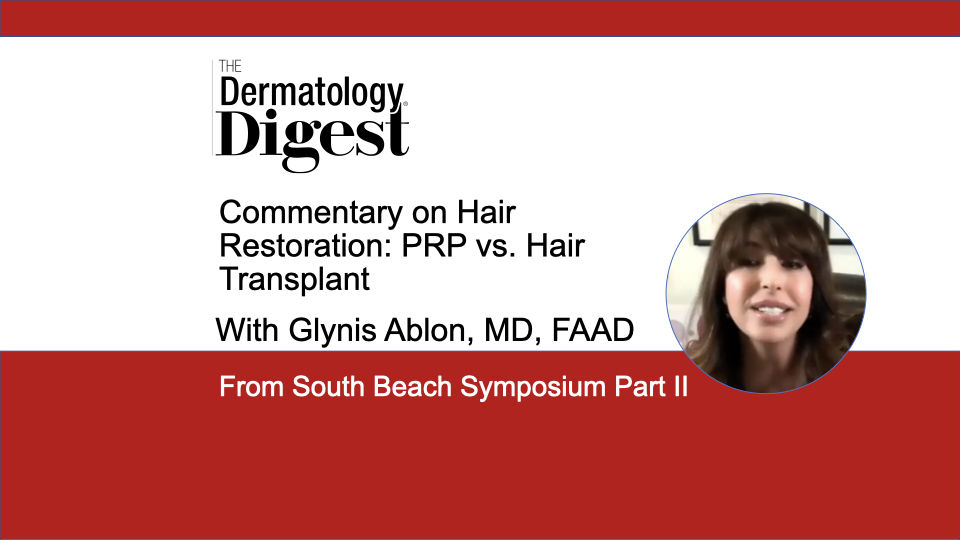Dr. Glynis Ablon discusses using platelet rich plasma for hair restoration, the pros and cons of surgical options, and individual treatment plans with combination therapies.
Glynis Ablon, MD, FAAD, is Associate Clinical Professor of Dermatology, UCLA, and Director of the Ablon Skin Institute and Research Center.
“First, of course, these procedures are completely different—nonsurgical versus surgical,” said Glynis Ablon, MD, FAAD, Ablon Skin Institute and Research Center, Manhattan Beach, California, who recently discussed the differences between PRP and surgical hair transplant at the South Beach Symposium Part II in Hollywood, Florida.
“Second, understanding the cause of hair loss is imperative. Differentiating between scarring and nonscarring alopecia, as well as the success rates of procedures, makes decision-making a little clearer.”
Platelet Rich Plasma (PRP) is a concentration of autologous platelets suspended in plasma, giving it a platelet concentration higher than that of whole blood, said Dr. Ablon.
“When it’s separate and activated, the serum releases growth factors directly responsible for stimulating hair growth.”
PRP for hair restoration requires patients commit to 3 to 4 sessions, one per month, with quarterly maintenance.
“I find it successful in about 80% of my patients, but it’s imperative that patients understand, depending on their diagnosis that PRP may need to be ongoing.”
By comparison, transplants can be performed in 1 to 3 sessions and provide immediate, permanent results. However, certain patients, such as those with progressive androgenic alopecia, may require repeat treatment in years to come.
And just because hair transplant is a more immediate and permanent option, Dr. Ablon said, hair surgeons also often have patients add on additional treatments.
“It’s also critical to understand that most transplant surgeons, also recommend supplemental treatment in addition to transplant, like PRP, low level lasers and supplements to provide the best results.”
Before making a treatment decision, Dr. Ablon said, dermatologists should perform a full patient history, physical, and lab workup, with possible punch biopsies.
“I like to start patients on topicals and supplements to give patients something to do to help their condition at home. I consider in-office or even home [treatment with] low-level lasers or LED caps, and subsequently, if appropriate, I offer the PRP.”
Importantly, choosing the right procedure should be made jointly with the patient based on financial considerations and availability, said Dr. Ablon.
“We have a large armamentarium from which to choose our course of therapy, ranging from topical and oral products, supplements, lasers, platelet rich plasma, camouflage techniques, and of course transplants. It’s imperative to know what kind of hair loss, the patient is experiencing in order to offer the most current and successful choices. I do find in all cases, that combination therapy does seem to work best, but it’s up to the dermatologist to discuss in detail what makes most sense for each individual patient.”


